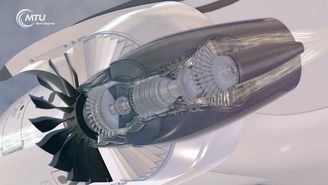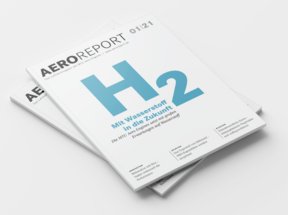
IR-News details
First A320neo with MTU Aero Engines technology on board delivered
- New generation of aircraft offering appreciably reduced fuel burn and CO2 and noise emissions
- MTU is responsible for assembly of one third of the PW1100G-JM production engines manufactured worldwide
Munich, January 20, 2016 – After 12 months of flight testing, the first A320neo powered by geared turbofan (GTF) engines to enter revenue service was handed over to the customer today. European aircraft manufacturer Airbus delivered the first of the single-aisle jets incorporating the eco-efficient propulsion technology to Lufthansa. The PurePower® PW1100G-JM geared turbofan engine has been developed and built jointly by Pratt & Whitney, MTU Aero Engines and Japanese Aero Engines Corporation (JAEC). Delivery of the aircraft to Germany’s flag carrier marks an historic day for MTU; for with its high-tech engine technology, the company has played a role in bringing next-generation aviation technology to the market. Germany’s leading engine manufacturer makes a substantial contribution to the GTF engine program, supplying highly engineered components and taking on responsibility for final assembly and maintenance work.
With a market share of around 60 percent in the narrowbody segment, the A320neo is currently the most successful airliner in this category. Since its official launch in 2010, more than 4,400 orders have been received from close to 80 customers. “Delivery of the first A320neo marks a major milestone in the success story of the GTF,” according to Michael Schreyögg, Chief Program Officer at MTU Aero Engines. “The geared turbofan technology used on the PW1100G-JM will have a decisive impact on MTU’s OEM sales over the coming years and decades. Also, we have made the necessary preparations to ensure everything is in place to start providing support to the engines in revenue service with the airlines.”
The GTF marks a huge step forward in technology, for the new engine architecture reduces both fuel burn and CO2 emissions by 15 percent and almost cuts noise in half. MTU contributes key components: the high-speed low-pressure turbine and the forward four stages of the high-pressure compressor. The GTF’s low-pressure turbine won two innovation awards in 2013; its technology has been further developed to a point where it beats conventional turbojet components by a wide margin. Among the features of the GTF’s low-pressure turbine are a reduced stage count – and hence a more compact, lighter construction –, lower noise emissions, novel, aerodynamically optimized 3-D airfoils and new, highly resistant, lightweight materials, such as titanium aluminide. This intermetallic high-temperature material in a class all by itself was developed by MTU and its partners in the record time of a mere seven years. Low-pressure turbines are among the most heavily loaded components in an engine – they must withstand high temperatures and high speeds.
MTU holds an 18-percent work share in the program. Apart from contributing the low-pressure turbine and parts of the high-pressure compressor, MTU is also responsible for assembling one third of the PurePower® PW1100G-JM engines produced worldwide, this work taking place at its Munich headquarters. “With our big program share, we have to cope with large volumes. This marks the most challenging production ramp-up ever in MTU’s history, but we are very well prepared,” explains Dr. Rainer Martens, Chief Operating Officer at MTU Aero Engines. “Airbus just recently decided to increase the production rate again, now to 60 aircraft per month from mid-2019 on, to keep pace with continued strong demand. This, of course, will also raise the bar a notch higher for MTU.”
Contact

Senior Manager Investor Relations

Senior Manager Investor Relations



